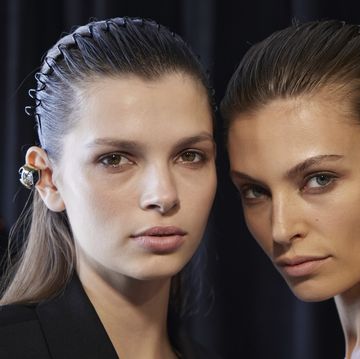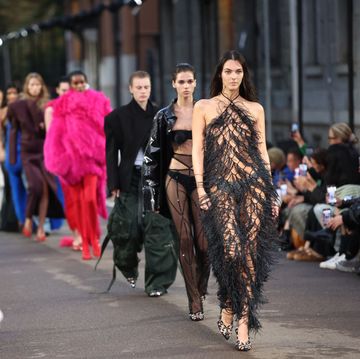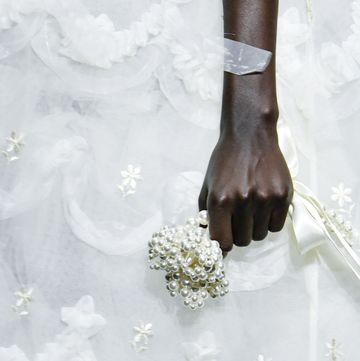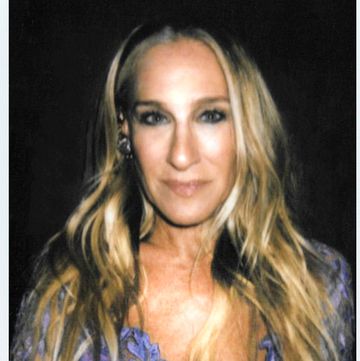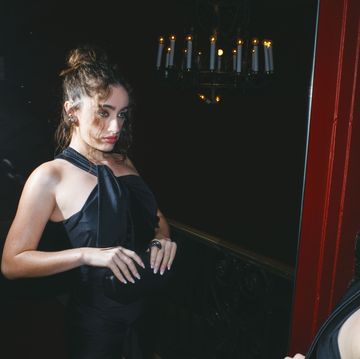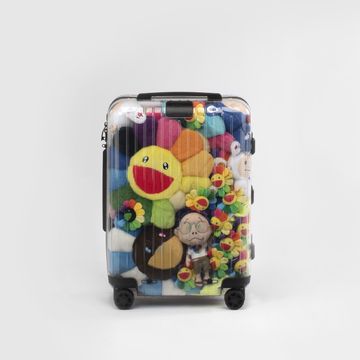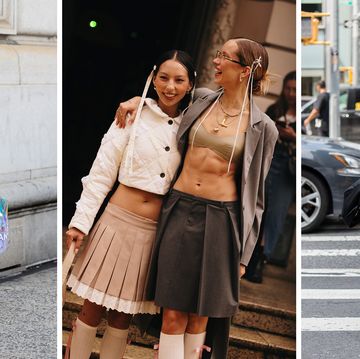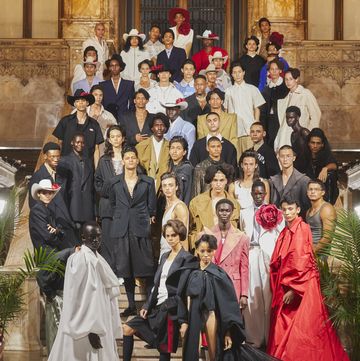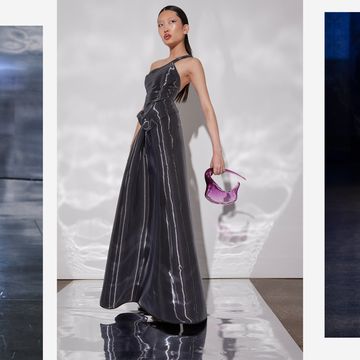Say you’re reading this at home. Say you’re completely surrounded by the clutter of your life: picture frames, clothing hangers, records, nail files. Say the entire room—and everything in it—becomes an art installation.
The daily detritus might mean little to you at first glance, pieces of a future legacy that you have yet to connect the dots of, but Mellány Sánchez would have you think twice. In a new exhibit co-presented by the Abrons Arts Center and the Tenement Museum, the stylist, creative director, and curator extracts meaning from mundane (and some not-so-mundane) objects to tell an imagined story about a midcentury garment worker living on the Lower East Side. Fittingly, the exhibit is called “Objects of Permanence.”
“What ‘Objects of Permanence’ is asking people to see are the ways that objects are vessels for stories of lives lived,” says Sánchez, a born-and-raised New Yorker whose previous multimedia projects have paid homage to the city and her Puerto Rican identity. “By simply being able to see and value our own belongings as narrative conduits, then we have the opportunity to preserve our family histories.”
Released between Labor Day and throughout the duration of New York Fashion Week, the installation asserts that the city’s current prominence as a global fashion capital is, in large part, owed to the labor of its garment workers. New York once boasted a robust garment industry, relying on mostly women laborers hailing from migrant communities. In the late 19th century, these women mainly consisted of Jewish and Italian immigrants; by the mid-20th century, the labor force primarily included Puerto Ricans and African-Americans.
Amongst other photos and video displays, the installation envisions what a midcentury garment worker’s living room and workspace might look like, taking after the Tenement Museum’s exhibition “The Saez Velez Family,” based on a real Puerto Rican family who lived on the LES in the 1950s. The museum lent some personal belongings of the family matriarch, fellow garment worker Ramonita Saez Velez, to flesh out the fictional settings of domestic life in “Objects of Permanence.” Sánchez then tapped lauded designers to contribute “imagined artifacts.”
“This story is as much about preservation as it is about moving forward,” she explains. “There are voices we wanted to include in this story of folks, like myself, who don’t necessarily have a historical tie to this work, but who have the wish, the interest, and the energy to honor this story.”
These “imagined artifacts” feature a colorful Pop art dress rendered in a 1940s silhouette pulled from Christopher John Rogers Pre-Fall 2023 collection, a wooden armoire spilling out with vintage nightgowns and quilts from Emily Adams Bode Aujla’s archive, and a welded metal-and-canvas corset designed by Elena Velez. Other contributing designers include Maria Cornejo from Zero + Maria Cornejo, Kim Shui, Tremaine Emory from Denim Tears, Rio Uribe from Gypsy Sport, Bárbara Sánchez-Kane from Sánchez-Kane, Procell, and Willy Chavarria.
Obtaining these contributions was a matter of linking the designer’s ethos to LES’s history as a cosmopolitan hub of garment work. “It was about figuring out the ways that they are storytellers,” Sánchez says, “and the ways that the stories that they tell connect to that work.”
The power of unions—specifically, that of the International Ladies Garment Workers Union—is a recurring motif throughout the exhibit. The first display greeting viewers showcases three shirtwaists embroidered with the names of three women who perished in the 1911 Triangle Shirtwaist Factory fire. The blaze, which spurred the passage of the first major worker-protection laws in New York, occurred just two years after 20,000 women who worked in the city’s garment industry went on strike for better pay and the right to unionize. Though the strike ultimately failed to obtain legal union recognition, it marked a turning point for traditionally female labor, transforming perceptions of so-called “woman’s work,” showing it to be worthy of being organized and celebrated—and withheld if women’s demands weren’t met.
“We didn't set out to be like, ‘This is about a revolution and about labor unions and about equality,’” says Aldo Araujo, a curatorial collaborator who worked on the installation with Sánchez. “But those are the stories that came forth.”
The exhibit additionally displays ephemera from the ILGWU’s heyday, with donations from organizer Lidia Correa and labor icon May Chen: political buttons, a newspaper photo of women on the picket line during the 1958 dressmakers strike, even bedazzled hair barrettes spelling out UNITE ILGWU.
It’s a compelling reminder that this week’s slate of highly anticipated designer shows and runway collections would be all but impossible were it not for the garment workers who made the clothes, literally stitching together the city’s reputation as a leader in high fashion.
“If we view fashion as art and the clothing as ‘objects of permanence,’ without [garment workers], the designer wouldn’t be able to show the magic on the runway,” Araujo says.
For Sánchez, the installation’s artifacts—real and otherwise—also embody a new way of thinking about the things we own. Our belongings aren’t just remnants from our individual lives, but relics of a community we participate in.
“New York is an ever-changing city, and I think that our place in these cities is sometimes not one that feels completely stable or permanent, especially when we speak about the Puerto Rican communities,” she says. “Out of our community comes this expertise in finding ways to last, to survive, to speak purposefully. So, ‘Objects of Permanence’ is a way for other people to understand how we’ve had to survive. And sometimes it’s our objects that will tell the story for us.”
“Objects of Permanence” is on view now until September 14 at the Abrons Arts Center.










